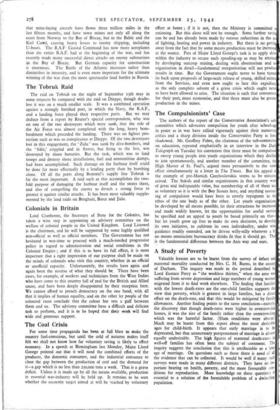A Study of Poverty
Valuable lessons are to be learnt from the survey of infant and maternal mortality conducted by 'Mrs. C. M. Burns, in the county of Durham. The inquiry was made in the period described by Lord Eustace Percy as " the workless thirties," when the area was suffering from severe depression and large numbers of young women migrated from it to find work elsewhere. The finding that families with the lowest death-rates are the one-child families supports the view that poverty, which is greatest in large families, has a direct effect on the death-rate, and that this would be mitigated by family allowances. Another finding points to the same conclusion—namely, the discovery that though death-rates were higher in overcrowded homes, it was the size of the family rather than the overcrowding which was the harmful factor. (Slum conditions were absent) Much may be learnt from this report about the most desirable ages for child-birth. It appears that early marriage is to be deprecated, but that unnecessary postponement of marriage is almost equally undesirable. The high figures of maternal death-rates in well-off families has often been the subject of comment. The inquiry suggests the conclusion that this is attributable to a later ;1 age of marriage. On questions such as these there is need of all the evidence that can be collected. It would be well if many such surveys were made in many different districts. They have an im- portant bearing on health, poverty, and the more favourable Con-
ditions for reproduction. More knowledge on these questions Is essential to a solution of the formidable problem of a dwindling population.


























 Previous page
Previous page